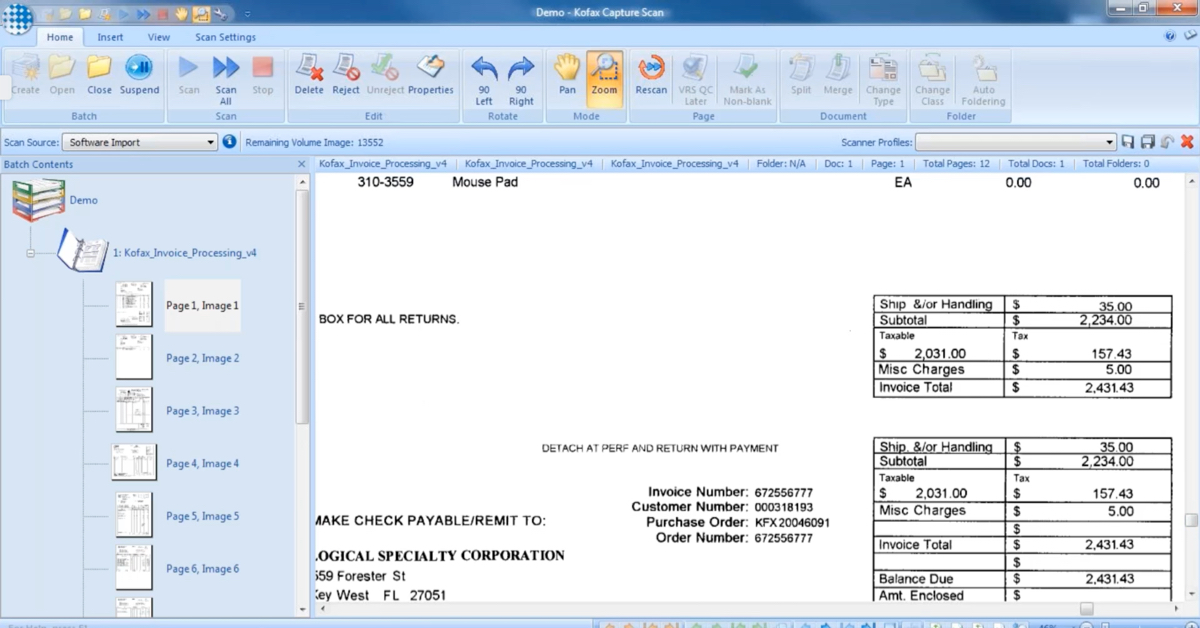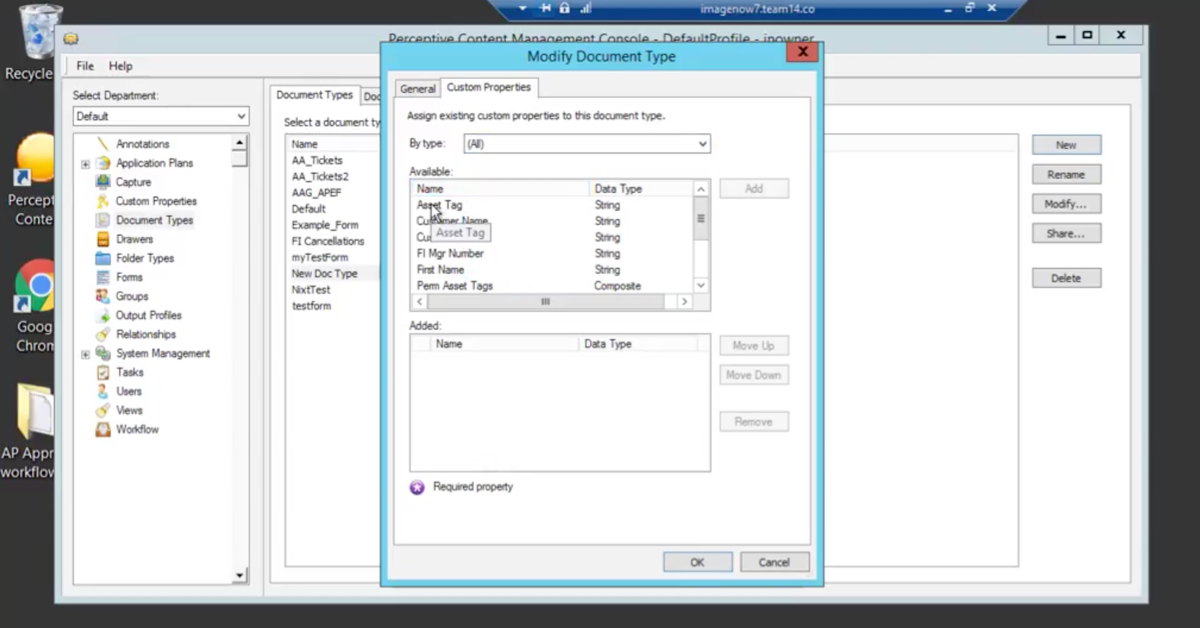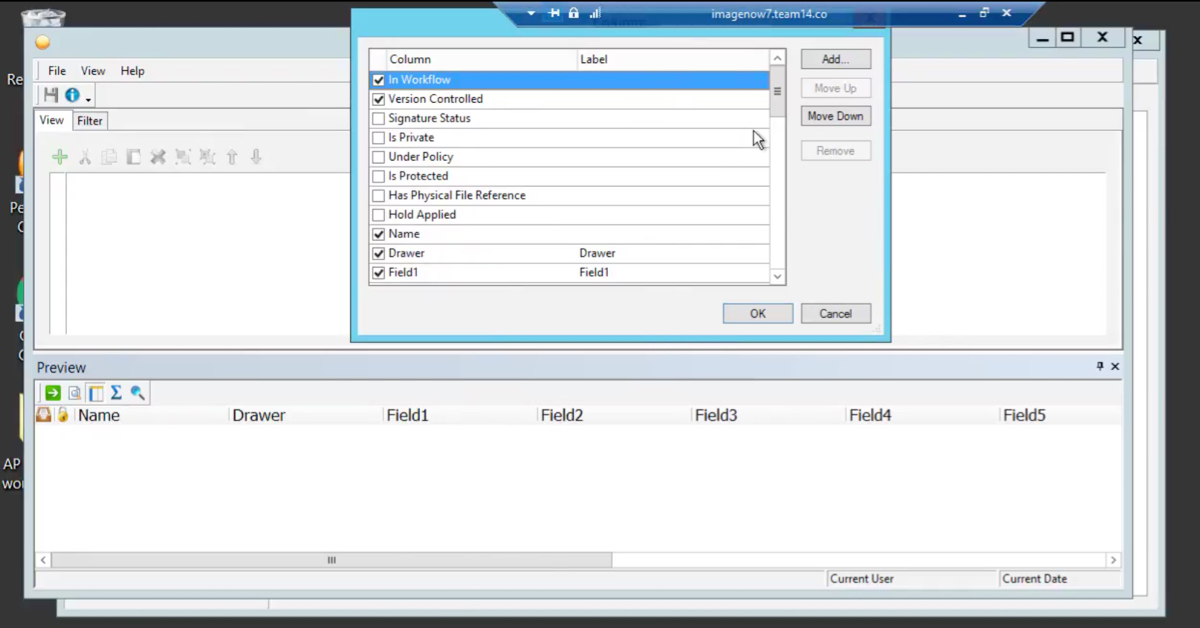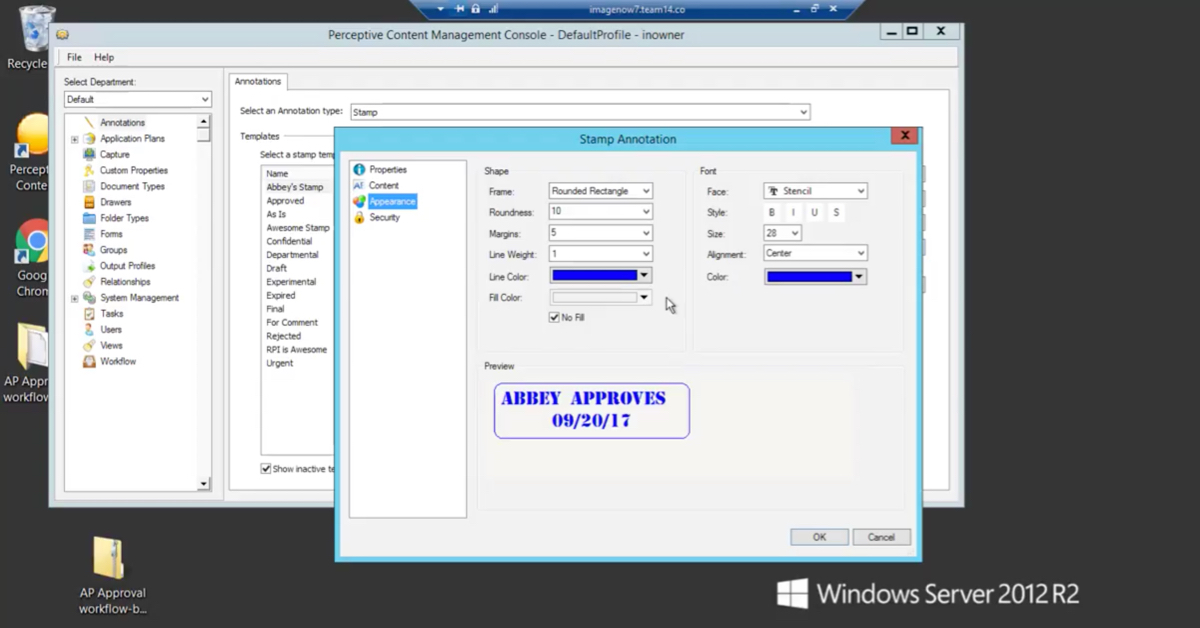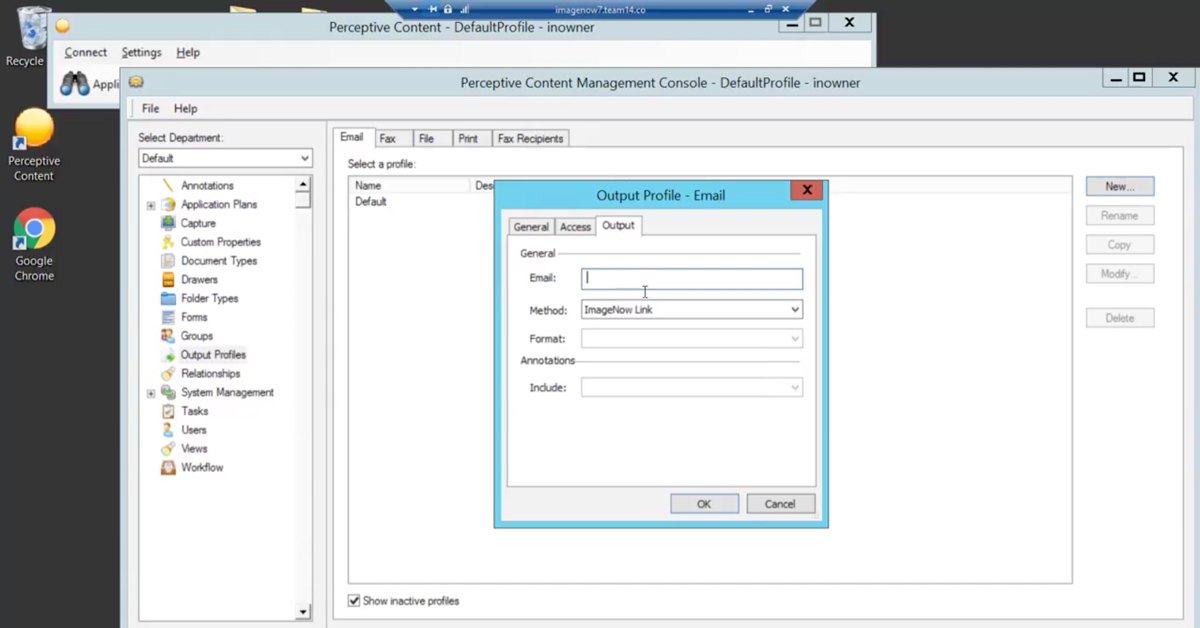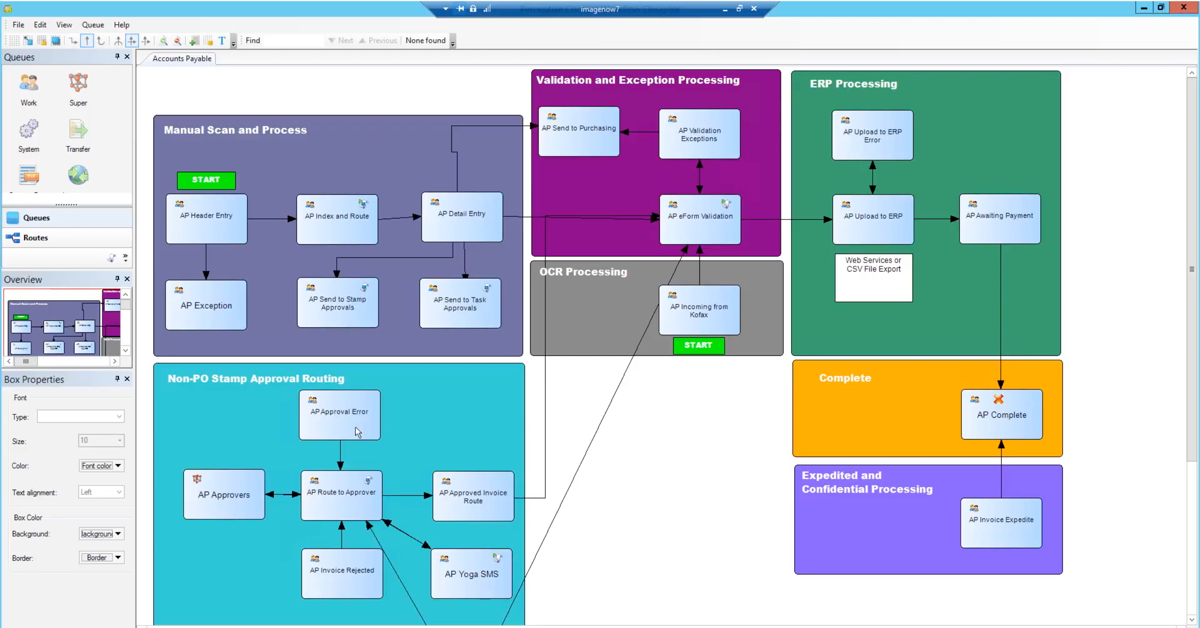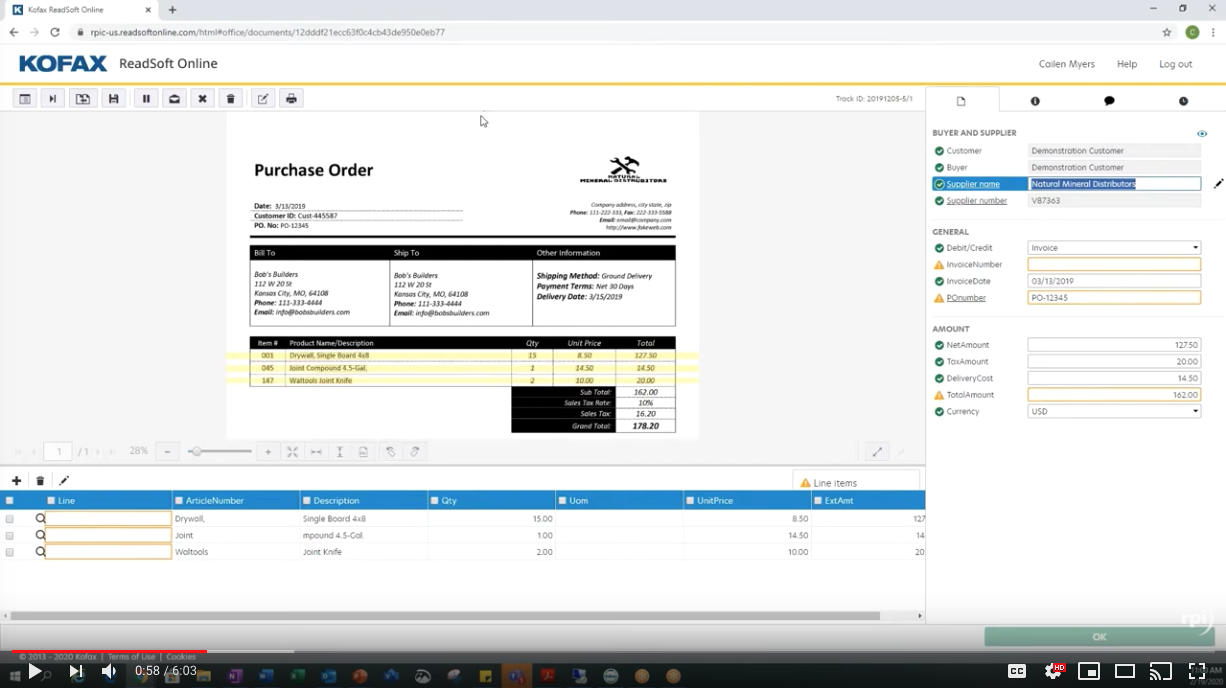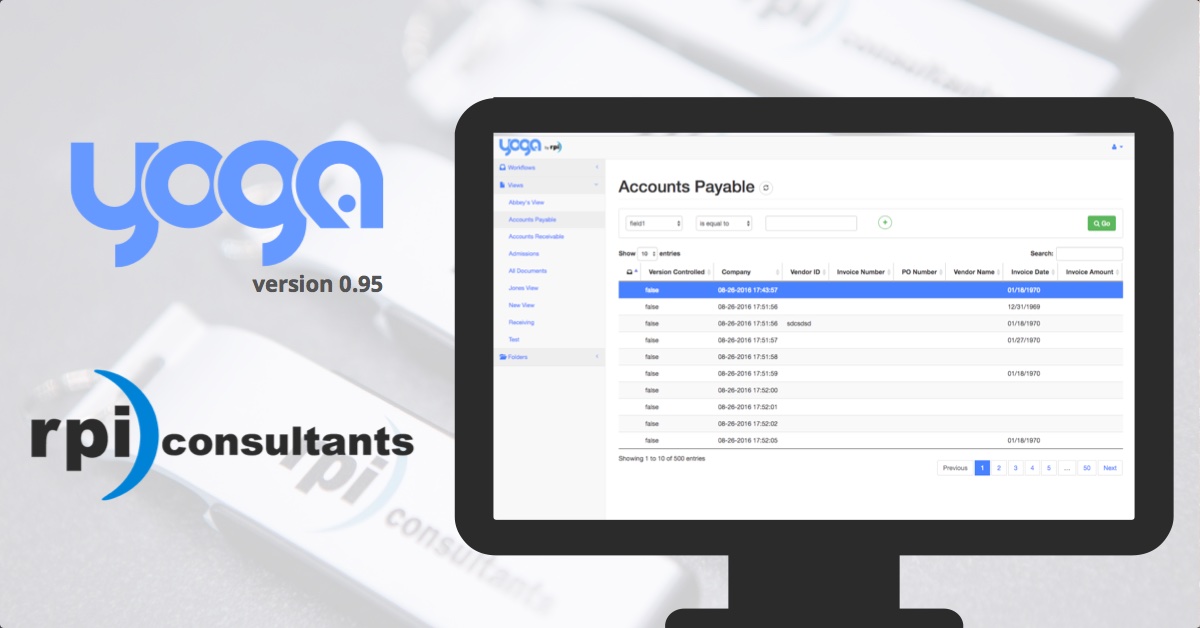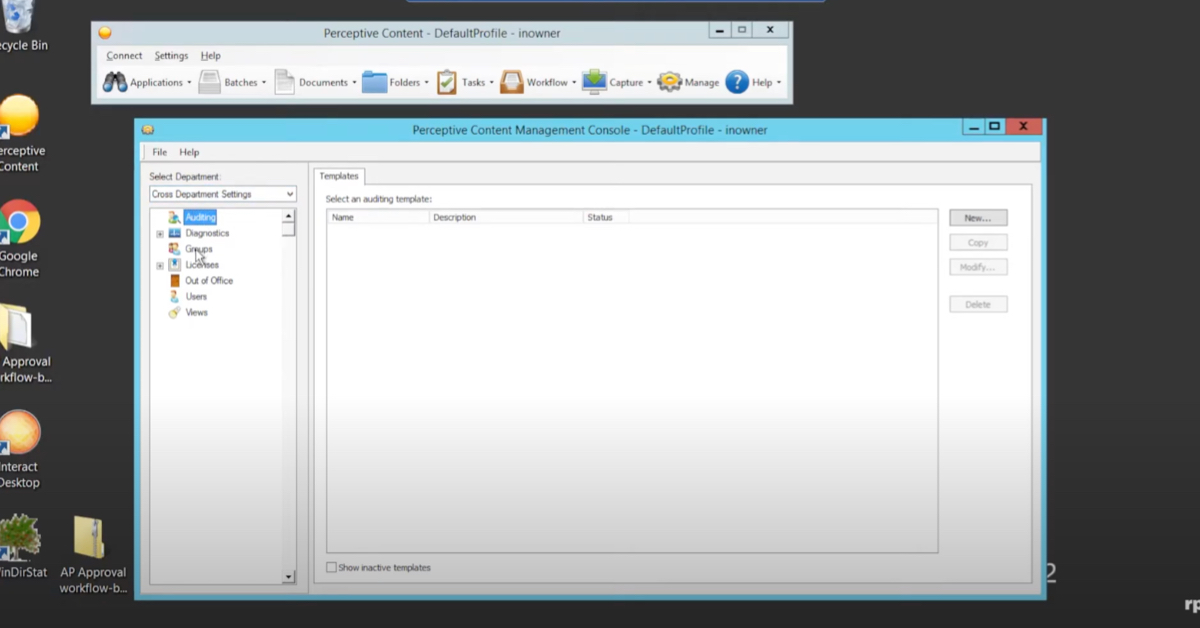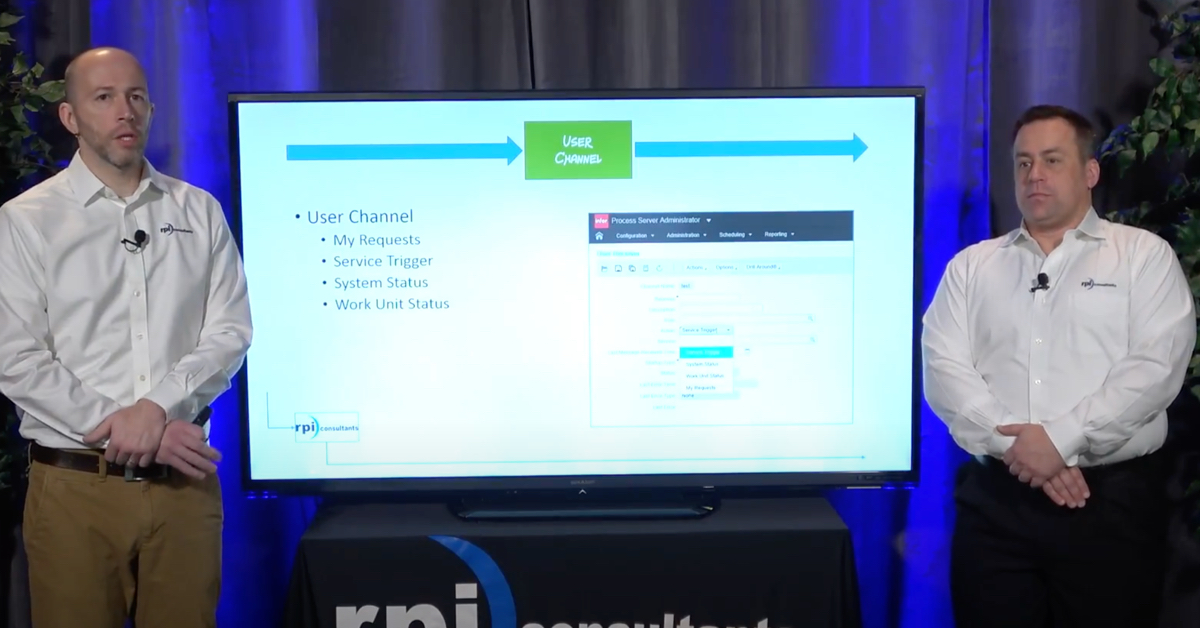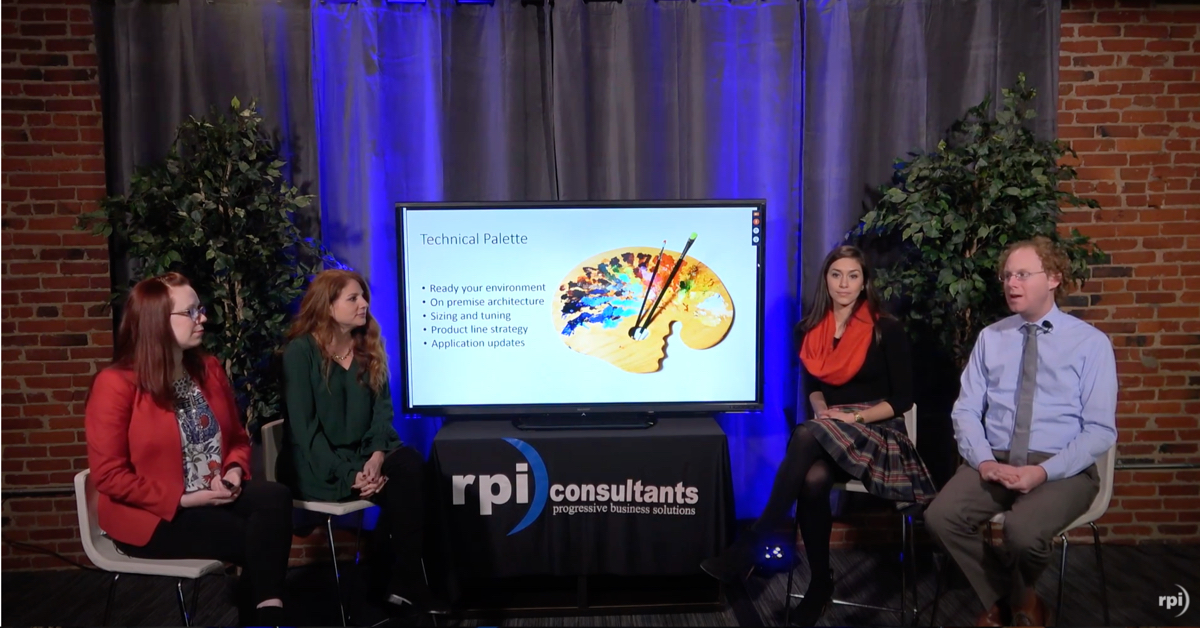Keith:
All right, let’s go ahead and get started and once again, I want to welcome you to this morning’s presentation on Infor Document Management. I have two wonderful presenters here for you today, Mr. John Marney, Mr. Jeremy Stoltzfus teaming up to show you where the solution is today, and everything that you can do with it, and where it’s going. I will hand off to them in just a second.
First, please know that we are recording this webinar. It takes us a couple of days to get it rendered and loaded, but once we do move what you got linked. Second, we welcome questions, ask them in the “Go to webinar”, our questions box and we will ask him throughout, and we’ll save some time at the end for more. And with that I give you John and Jeremy.
John Marney:
Hey, thank you, Keith. We’re going to get into this. At Infor Document Management for CloudSuite. We do have some other upcoming webinars. We’re doing this as part of a larger webinar week, so you may be familiar with me every first Wednesday of every month. And next month, our webinar Wednesday is actually TBD. We may be doing some OnBase content and we’re still trying to figure that out. We do have some other office hours presentations. If you’re not familiar with those, those are a little bit of a technical deep dive where you can ask questions and interact with the audience attendees this month through the image shop tasks and next month we’re talking about perceptive experience.
As Keith introduced. My name is John Marney. I’m the Manager of Solution Delivery. I am in the Content and Process Automation practice here at RPI. Our focus is primary on content, and workflow platforms, and robotic process automation, so platforms such as Perceptive, ImageNow, Hyland OnBase, all the Kofax products, et cetera. I’ve been doing this for about nine years. I’m a connoisseur of fine product documentation. I know a good one when I see one and I’m a proud father of a eight month old.
Jeremy S.:
And my name is Jeremy Stoltzfus. I am a Senior Technical Consultant with RPI.
Oh. How about now. Is that better?
All right. My name is Jeremy Stoltzfus. I’m a Senior Technical Consultant with RPI. I have over about 15 years of experience with Infor Lawson Products. Formally, a System Administrator on the client-side for many years, responsible for installations, upgrades, various project implementations. Right now, I’m specializing a lot in process improvement, specifically with Infor process automation and very CloudSuite focused right now.
In my spare time, I like to run and specifically love to run some long-distance relay events.
John Marney:
Really long, really long.
Jeremy S.:
All right, so just a little bit of what we’re going to cover today. We are going to of course, give you an overview of Infor Document Management or IDM and go into the different features and components of it just to give a very high-level introduction of what it is and what it is capable of doing.
We will be looking at a specific case study within IDM and we will also talk about some implementation and migration considerations. And then, of course sum it up and read room at the end for questions.
Okay. What is IDM, Infor Document Management? It is a document repository. Many customers are using something today, other products out there. Infor has now built a document management solution that is built into the Infor OS. Infor OS is the core of your CloudSuite applications. Infor Document Management just comes along with that and is part of that, so it is a native feature within Infor CloudSuite.
Within IDM, there is a standard library of different document types. These are delivered specifically with the CloudSuite Financials applications and there is an extensive library of those that are integrated tightly with the application itself.
John Marney:
And we’re going to dig into all these as we go. In addition to the standard library, there are per-built integrations for that business data within the Business Data Applications. These vary from application to application, so primarily what we are talking about is within the FSM product and the integrations it has back to that standard library. However, going forward we will see further integrations being developed and rolled out for other Infor apps.
There are configurable templates for document output, so this is something really well baked in. We’re going to talk about the different templates and how they can be modified. And it’s important to keep in mind that IDM as an app built on Infor OS is a standalone application, so while there’s a lot of value in the integrations with the business apps, it does have an entire feature set and capability to function as a document repository outside of the integrations.
The first major feature that you’re going to find as you roll into an implementation in CloudSuite is the document output. This contains pre-built templates within the business application. A great example of something like a purchase order. When a purchase order’s created, if it’s emailed or printed, it will automatically generate the document inside of a pre-built template. The document types such as purchase order are then of course contextually associated with that business data.
The document gets generated out of the business app, stored in IDM, and can be referenced back from the business app. And of course, again, the documents can be automatically generated. If this is something, again, in the context of a purchase order, if it’s sent electronically, you can elect maybe you don’t want the document generated versus if it’s email or mail, you do want the document generated.
Jeremy S.:
As we look, with those document types that are delivered within the application, then of course, those templates are delivered, you can create new templates but you can modify those default delivered templates to include things like logos to meet special formatting that your clients may need or other things like that. These templates can all be edited and maintained. It as a word plugin that allows you to essentially communicate directly with the CloudSuite Financials IDM repository and update those templates, reformat them as you need.
John Marney:
Yep. And here’s just a quick screenshot of the out of the box purchase order templates that are in CloudSuite. There’s one for PDF, one for rich text, one in XML, and then there’s a word version as well.
How do we get the documents into the system that we have that aren’t generated by IDM? Documents can be captured into IDM in a number of ways, primarily two. If you have a user working through the IDM app, there is an “Add Document” button. The say allows them to select the document type and populate any attributes or properties that need to be filled in on that document. There is a utility available for scheduling file imports for servers or file shares.
It’s important to consider the translation from your existing document capture processes. There is no direct scan capability like you might be familiar with, with other content applications except through the Infor Capture add-on, which we’ll talk about it a little bit later. But if you do need to capture or scan documents, you would just drop your scans into a file share and import them using the batch scheduler.
Emails or other attachments, EDI, things like that can be actually imported using RPIs Yoga Capture service directly out of the inbox. And of course, like I said, the attributes or the metadata, this is translated as things like keywords and OnBase, or custom properties and perceptive. All of the user defined index data can be set at capture time or modified later or be contextually brought in from the business app.
Jeremy S.:
When we talk about, so you’ve got all these documents in your repository, so how do you get them out, and how do you view them, and see them? Within the IDM application itself, there is a user interface, a query builder basically that allows you to search on those various attributes, metadata that John talked about that allow you to put that in there. If you’re looking for a specific invoice and you know the invoice number for example, you can add that to the search criteria.
Once you find those documents, then those documents can just be viewed, you can export them, you can email them or whatever. There’s a bunch of other actions is as well that you can do right within the application. It’s also important to note that there is actually, within the CloudSuite Financials application, you’ve got in context viewing. If I happen to be looking at invoice number one, two, three, four, five, on the right hand side of the screen, there’s a little contextual app that will automatically determine, “Hey, I’ve got an invoice image in Document Management” and I’ll just show it right there.
And from there you can do a lot of…you can go into the application or do some actions right off of that contextual app. It’s real-time, in-line. Your users don’t even actually have to go to a separate application that can be right within the CloudSuite Financials. And it is important to know that within the document repository, the security around these documents, so within the financials, the financials applications roles, follow into the IDM repository. What you’re allowed to see within the CloudSuite Financials application, you are allowed to see those documents as well.
John Marney:
Yep. And here’s a screenshot of that context viewing.
Jeremy S.:
Yep, exactly. I’m clicking, I have a list of invoices and I have the bottom one highlighted and I can see here that there’s an invoice image associated with that.
John Marney:
Not technically part of IDM, are our workflows that are built inside of ION, which is just another extension or piece of the entire Infor OS system. IDM is a component within it. If you want to leverage workflows built around or to include your IDM documents, you can trigger ION workflows based on a document capture or document creation. The custom processes are built in ION and then, you on the IDM application side, set up a trigger for what exactly whether an attribute change or a document capture is triggering the kickoff of that workflow.
I’ve mentioned earlier that there was an-add on called Infor Capture and what Infor Capture allows you to do is through a third-party partnership with Ephesoft, allows you to scan or captured documents directly into Ephesoft capture utility, which will classify and OCR your data. This works very similarly for other third-party applications. We’re very familiar with Kofax TotalAgility, Brainware, other types of applications that can do OCR. The leverage that ION API to extract master data out of a CloudSuite for validation purposes and then, to push the document and metadata into CloudSuite. And so, that’s how they actually get ingested in the CloudSuite into IDM. RPI Xavier Connect is a utility that we built to facilitate the transfer, helps navigate the authentication pieces to actually connect to CloudSuite both through that master data extract and a document transfer in.
Jeremy S.:
When we talk about managing your IDM content and even some of the metadata and the properties in the application itself, there’s as previously mentioned, the ability to create new document types. As I said, Infor does deliver a large extensive list of document types that are part of the CloudSuite Financials application, but you can create additional ones with those. With those, you can then add, or remove, or modify the attributes associated with those various document types. If you’re creating a new document type, you can create, relate it to an existing document type. It’s something we’ll talk about a little bit later. But for example, you’re working on an invoice and you want to attach some additional documentation that isn’t specifically the invoice image itself, but we can create additional document types that are related and come along for the ride essentially with those invoices.
Within IDM, you can also set up your retention policy. When you purchase CloudSuite, you do not have infinite storage, and anybody knows documents storage can take up a lot of storage space over time. And so, you want to look at defining retention policies and that is done per document type. This is how much of a certain document type are we keeping online at any given point in time. And as you’re setting all this up and configuring it in your test environment as you’re working through a deployment or an implementation, you can then take those utilities to then take all of your configurations, and export them from one environment, and then important them into another environment, so you’re not having to rebuild everything from scratch.
Just a screenshot here of some of the configuration pieces, some of the stuff that we talked about, document types, the ION configuration, connecting those pieces to ION workflows and some other utilities as well.
Now, I want to just talk a little bit briefly about as specific case study that I’m currently working on with a client for Infor Document Management and CloudSuite Financials. The requirements that were given to me, are listed here. Basically, we’re utilizing the project invoice functionality. The client wants to utilize that functionality, entering that invoice data into CloudSuite Financials. We want that information routed for approval. But in order for those approver’s to be able to fully understand the justification for everything, they want to be able to attach supporting documentation so that the approvers can look at that as part of the approval process. And then, once the invoice is approved, the final invoice should be generated and emailed to that project sponsor to get a PDF of the final invoice. And they wanted the supporting documentation to be included with that final invoice as well and generated in the same PDF documents so that there’s just one document, one final document being sent out.
As we look at the basic, very high-level process overview of what that looks like. We’ve got six main steps here and as we dive a little bit deeper into each step here, so the first piece is creating that invoice in CloudSuite Financials, so Utilizing the application, entering the data specifically for that project invoice. Then we’re giving the ability to create the supporting documentation. This is done as a user defined document type that is going to be related to that project contract invoice document, which is a delivered document type within the application. We’re relating that and then it can be attached via that in context viewer that we mentioned earlier, so all right there within the application surrounding that project invoice data.
And then, again, native function within the application, the CloudSuite Financials application is to submit that invoice for approval. This then kicks off an IPA workflow within the application, routing it to the various levels for that approval piece. As it’s being routed around for those approvals, those reviewers can look at that, look at the invoice specific details that are generated within the application. They can again, using that in context viewer, pull up that supporting documentation that has been attached by the person who submitted that invoice.
And then, once it is approved, the next piece is to generate that final invoice. We’re using the IDM template, the document output piece of that, that again, would be customized, configured using the word plugin. That final document is stored as a PDF, as an object within the IDM repository itself. And then, the final step is again, that requirement to email that out all as one giant PDF with the supporting documentation all in that same document. Within IDM, within the application, here’s where there’s an option to basically say, “Hey, include all of my related documentation. This is that piece where again, we’re creating that custom document type within the application and then, relating it to the invoice document type here as well so that the final result is that email going out with the invoice image itself and all the supporting documentation again in one PDF.
John Marney:
That’s an excellent case study. Thank you.
Jeremy S.:
Yep.
John Marney:
If we need to implement IDM, a workflow similar to what Jeremy described or anything else, there are a number of things that you want to consider and a number of considerations that I want to call in case you’re considering any level of migration to IDM. The first thing is, the considerations within your implementation. Can you click over?
Jeremy S.:
Oh, sorry.
John Marney:
IDM is a standalone application with its own roadmap. We talk a lot about the integrations. A lot of the immediate value with IDM is that in its integrations with FSM or other apps. However, it is definitely standalone. It has its own roadmap. There are features being rolled out by Infor and this is as a SAS product, constantly receiving revisions just like the business apps are. Even mid-implementation sometimes, which is.
Something important too, to keep in mind is that the attachment functionality that you may be familiar with inside of Landmark or in Lawson to actually store documents with the record still exists inside of CloudSuite and those are not IDM. If you are providing an attachment to a purchase order, or an attachment to a requisition, or something of that nature, it does not automatically store those documents in IDM. That can be set up and is potentially on the roadmap for Infor to investigate down the road as a baked-in functionality. But that is a question that we receive a lot when we’re exploring this.
Like I said, the integrations with the business apps are evolving. Much of the functionality we’re talking about is primarily FSM oriented. GHR is much more basic if there’s really much at all at this point. However, again, those are roadmap items within the product. You will see those continue to evolve. Within the IDM application, you do have the ability to take an existing document type and copy it? However, the copying preserves security and it preserves the attributes assigned to a document. It does not take with it any pre-built integrations, so an FSM, a payables invoice has a pre-built context to the invoice records within the FSM business application.
If I take that payables invoice and I copy it because I want to make a more secure invoice like a CEO credit card or something of that nature, it doesn’t preserve those integrations, so those kinds of things would need to be rebuilt if you need to further delineate your document types. It is important to carefully consider the security model the IDM supports if you’re implementing. It doesn’t necessarily match one for one with other systems or functionality out there yet. The biggest thing is that security is primarily set up at the document type level by security roles. And of course, you still have the same capability to add new security roles. All the layers that you ought to there, but it doesn’t necessarily support the same level of attribute level security that something like OnBase might and so, this isn’t necessarily a immediate showstopper for implementation. I think that this is primarily something that has to be designed around.
The final thing that I think considers that IPA workflows, which Lawson experienced users are going to be very familiar with, do not equate to the ION workflows that IDM necessarily is designed to leverage. They both can interact. ION can leverage the IPA and vice versa, but it is important to you to keep in mind that there is a distinction there.
Let’s talk a little bit about migrating. The primary conversation is going to be, is there a benefit to a full migration to versus just a day forward strategy. And as part of that full migration, really what you’re trying to identify and the RPI can help you identify is, is there an ROI for sunsetting an existing application and can I even sunset that existing application? For example, if you are an OnBase user with your EMR inside of OnBase, even if you migrate your business documents out, you still need to retain OnBase for your medical records.
On top of that, maybe some strategies to reduce the scope of what a migration might look like? Can I apply the retention to my existing system to reduce my total volume? This is important for storage. This is important for the length that a migration might take. This is important for a number of reasons that the size of the data that you are considering migrating. On top of that, it’s important to apply a health check or assessment to your existing processes and in your existing applications. Make sure that everything that you’re storing, it is contextual, that it is useful and if not, maybe there’re some things that we can eliminate in terms of overall processes and in terms of documents and content.
The other thing to consider is that while we may be leveraging application functionality for some business flows such as invoice approval or purchase order creation and things like that, are there any gaps that I might need to fill via an ION workflow and IPA flow? The business applications such as OnBase and Perceptive are very quick workflow builders and they may be doing some smaller tertiary processes that would need to be replicated inside of IDM or in CloudSuite in general.
And the final thing to consider is, can I replicate my capture sources? We’ve talked about how you can import documents in a number of ways. However, there are some businesses that are still very heavy scanners and as much as we want to move you away from paper and get you all paperless, the reality is that there is not a necessarily out of the box without the Infor Capture add on, a scan to CloudSuite option. On top of that, the email capture is also very heavily used. That’s a place where things like Yoga Capture can allow you to automatically import documents out and directly inject them into IDM.
That’s the meat and potatoes of our webinar. This is really exciting for me because I get to take my experience with content management and the document systems and marry it with Jeremy’s long experiences in Infor technical [inaudible 00:24:42] and really see how these things come together. We’re going to take any questions that might be out there right now. Our wonderful moderators are standing by. If you don’t know how, please open the “Go to Webinar” panel and there is a questions’ pane where you can submit questions.
Keith:
Okay. I believe that’s probably all we have for today. Obviously, you can follow up with us at questions@rpic, or in one of our emails. We’ll be happy to follow up on any other questions you might have. I want to thank Mr. John Marney, Jeremy’s Stoltzfus for a wonderful presentation. We have another one coming up at noon, Central, 1:00 Eastern. John will be back to talk about payroll leverage?
John Marney:
Yep.
Keith:
We’re looking forward to that. Please sign in. Thank you once again for attending.
John Marney:
Thank you.
Jeremy S.:
Yep.








